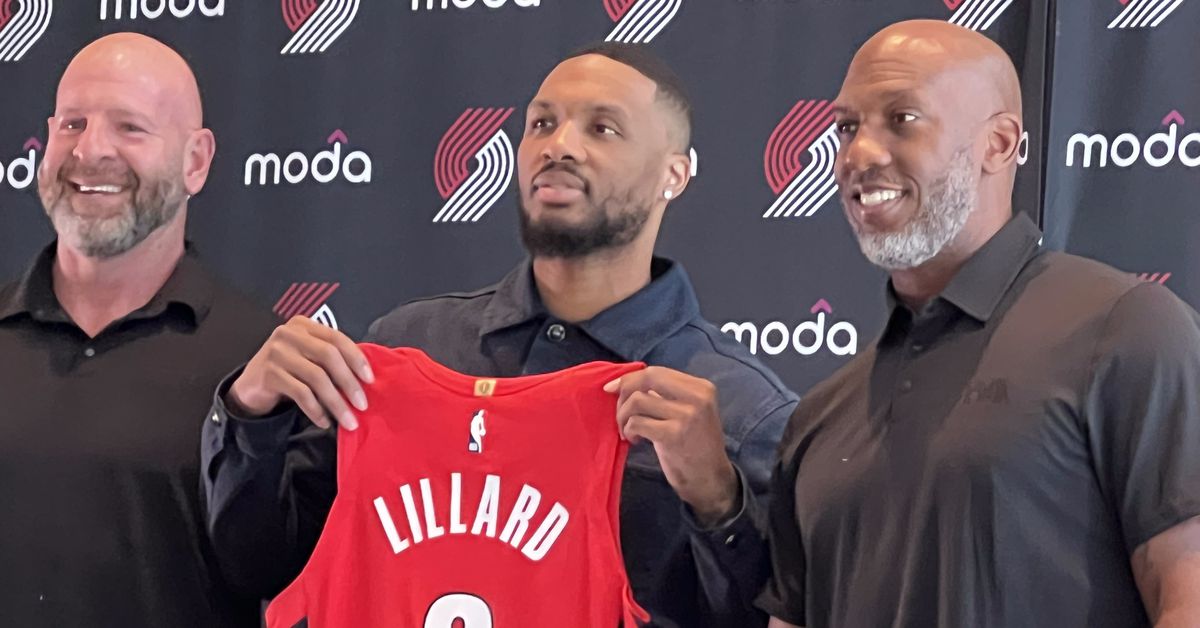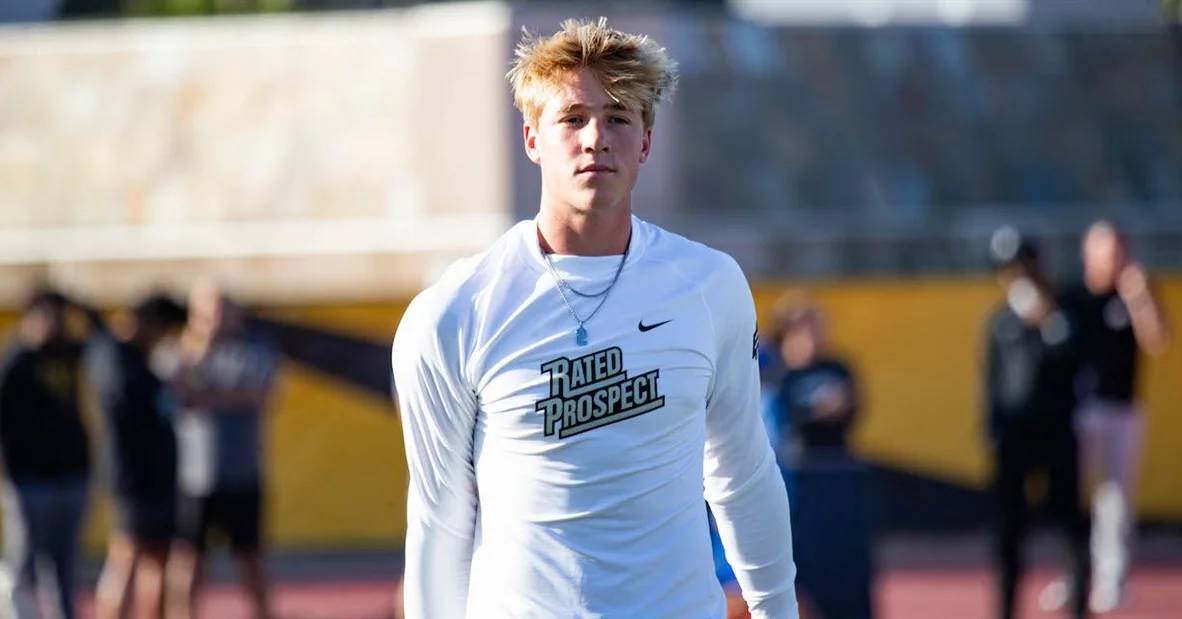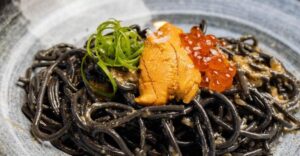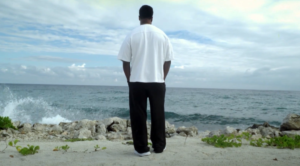Duck Dive: Wisconsin Badgers Football 2025 Preview
Special thanks to Rohan Chakravarthi of Bucky’s 5th Quarter for joining me on this week’s podcast to discuss Wisconsin’s roster:
I wrote my in-season preview of Wisconsin nearly at the end of last year; as it happened the Badgers fired their offensive coordinator immediately following their game with the Ducks and missed a bowl for the first time in 22 years. That means the remainder of their campaign after publishing that article was very short and presented little useful data to revise what we knew about their 2024 season. As such my conversation with Rohan was light on catchup and focused mostly on what the offseason changes have been for 2025, and this article will as well. For readers looking to re-familiarize themselves with how Wisconsin performed and what the ups and downs under head coach Fickell had been last year I’d recommend reviewing that in-season preview.
For our purposes today I’ll simply note that I think the much of the national media discussion about Fickell’s first two seasons in Madison, while not exactly incorrect, has been excessively glib. I think facile calls to return to the “good old days” of scrappy coached-up farmboys running power football are somewhere between nostalgic nonsense and a modern impossibility in the NIL era, and ignore both the many positive and necessary talent transformations Fickell has accomplished, and confounding strokes of bad luck including two successive season-ending injuries to starting QBs.
That said, even to an observer who approves of the overall project and had priced in some transitional pain on top of a few inevitable bumps on the road, ultimately the results have been more much more disappointing than they should have been. It’s difficult to avoid concluding that Fickell has made several unforced errors in managing the transition, and in his third year with Wisconsin it looks like he’s trying to correct a number of them on the offense, although I think the defense has been coasting for a bit.
:no_upscale()/cdn.vox-cdn.com/uploads/chorus_asset/file/26009708/Wisconsin_offense.png)
In three conversations with Rohan, I think we’ve come to a solid consensus on what was going on with Wisconsin’s offense, which factors were most and least responsible, where the strengths were but why they were rendered somewhat moot, and to what extent the current staff was responsible for those things as opposed to being inherited or unlucky events.
It goes like this: having to put the backup QB in both years is the most important factor, he simply was ineffective and grounded the passing offense, but former OC Phil Longo’s weird Air Raid passing system wasn’t a good offense in the first place and that was a bad hire by Fickell. It didn’t help that the wide receiver corps wasn’t great, but there was at least something to work with there and that’s lower down the chain, and we had plenty of time to make all these observations because the pass protection was actually pretty good.
They dealt with this terrible passing offense by pivoting to the run game with some good backs, and could pull off some efficiency drives as long as they stayed ahead of the chains. But there are always problems being one-dimensional, it wasn’t Longo’s strong suit, and for as good as the line was in pass-pro, they were strangely weak in run blocking (this falloff in rush effectiveness could be seen at the end of the previous staff, whose line Fickell largely inherited).
So then, the things to work on for a better offense in 2025 are, in rough order of importance: getting a new quality QB and competent backup, upgrading the OC, solidifying the interior of the line while retaining the pass-pro advantage, adding some more punch at WR, and reloading at RB. It’s too early to say if all or even any of these goals will be achieved, but it’s clear that Fickell has moved on each of them this offseason and in the order of priority and resource allocation that seems to line up with a similar assessment.
Fickell hired OC Grimes to replace Longo. I’ve charted several of Grimes’ games over the years at his previous stops — most recently Kansas, the three years before that at Baylor before being dismissed, and the three before that at BYU just before his QB Zach Wilson was drafted second overall — due to film study projects reviewing common opponents and Big-XII defensive transfers. I haven’t been wild about what I consider an overly simplistic playbook that requires the QB’s athletic gifts to bail him out a lot. But I’d still consider Grimes an improvement over Longo, for whom I’ve consistently had similar criticism but additionally felt had little cohesive downfield play sequencing; Grimes at least brings an eagerness to stretch the field vertically which can certainly produce some big if inconsistent results when it clicks:
:no_upscale()/cdn.vox-cdn.com/uploads/chorus_asset/file/26009707/Wisconsin_Grimes.png)
The other notable offensive coaching change Rohan and I discussed was that, unlike Longo who also coached QBs, Grimes will just be calling plays and so Wisconsin needed an independent QB coach. Rohan said they considered Michigan’s QB coach but ultimately went in-house, moving over the ambitious former WR coach Guiton (the former Ohio State quarterback, Braxton Miller’s backup who got a lot of play due to frequent injuries to the starter in 2012 and 2013) and bringing in WMU’s WR coach Reid who Rohan said has meant doubling the number of young aggressive recruiters to the passing offense.
The entire quarterback room from last year has transferred out – the starter who got injured in week 3 Tyler Van Dyke, the backup who’s had to play the last two seasons Braedyn Locke, and both of the freshmen we hadn’t really seen, Cole LaCrue and Mabrey Mettauer. All three of the passers are new additions this year: Maryland transfer #9 QB Edwards, San Diego State transfer #18 QB O’Neil, and low 4-star prep recruit #3 QB C. Smith. According to Rohan that’s almost certainly the order of play, with Edwards brought in to be the starter and O’Neil knowing he’s the backup.
Edwards was something of surprise (to both me and friend of the series Tre Moore of Locked on Terps) for beating out NC State transfer MJ Morris last year, because his backup tape behind longtime starter Taulia Tagovailoa wasn’t impressive and all other signs pointed to the Maryland staff taking Morris as their multi-year starter of the future. I think Edwards’ 2024 film showed better play than he had put on tape before with a huge amount of raw passing yardage on the season, but his 130.1 passer rating, two-thirds of a standard deviation below FBS median, is tough to parse. He had a couple of fantastic outside receivers — Tai Felton and Kaden Prather — who are now in the NFL, while almost no one else on that offense had much business on a Division-I football field, with terrible pocket protection and no run game to speak of.
It was clear on tape that Edwards has a big arm and could sling it deep with full confidence in his receivers to beat the coverage, and he worked the RPO slant pass very well if DCs were foolish enough to step down on the run or blitz on early downs, but he also struggled with touch and control doing just about anything else. Rohan said that accuracy issues have continued to crop up during Spring practices in Madison, but that the downfield power has been exactly what they expected to fit Grimes’ approach when they identified Edwards as their trigger man.
Edwards got dinged up towards the end of last year and missed some time (Maryland continued to play him for a while before pulling him even though he clearly had lost effectiveness, which I was not a fan of). If this happens again and Wisconsin for the third straight year has to turn to the backup, he’ll have some starting experience in O’Neil, who played the entire season for the Aztecs (his name is spelled in the same way as Oregon’s three-year starter in the early 90s, but there’s no relation). I watched an early game of his against the Beavers, it wasn’t a thriller and I wasn’t surprised that he finished the year with a 127.1 passer rating, but he didn’t look lost or like a liability.
Last year’s top running back was Tawee Walker who’d transferred in from Oklahoma and got about two-thirds of carries, he’s now transferred out again. The third place back with about 15% of carries was Chez Mellusi, who’d come in from Clemson a few years ago, and has finally run out of eligibility after playing for six years. Walker and Mellusi were the two most effective backs on a per-play basis for Wisconsin in 2024, both with about 4.3 adjusted YPC which massively outpaced the other two, and per-carry success rates that were above water (Mellusi’s were the highest on the team at 60.5%, an excellent number and suggesting he probably should have been fed more; I’ve thought Wisconsin’s RB carry distribution has been irrational in both years under Fickell).
The two returners from 2024’s four-back rotation are #6 RB Dupree (who wore jersey #13 last year) and #25 RB Yacamelli. Both have curious numbers from charting. Dupree came in underwater at 46% efficiency and 3.6 YPC but had the second most carries as a true freshman, and he had some very impressive receiving numbers albeit on relatively limited targets at 9.7 adjusted YPT, which actually made him the best pass-catcher on the entire offense. Yacamelli’s raw average in the statbook is a staggering 8.3, but from charting I think this is an artifact of a small number of weird garbage time or FCS-opponent giant runs, because during meaningful play he has the numbers that match his film profile of a short-yardage thumper, high success rate but only 2.6 adjusted YPC.
On the podcast Rohan seemed to have read my mind about this room because he anticipated all my questions about how it might be reconfigured given the lack of transfers into it and the two other 2024 recruits who seem to be coming online as redshirt freshmen in 2025. He said that despite Yacamelli’s seniority and (in my opinion, chimerical) high rushing average, he’ll probably be the third or maybe fourth back and I would guess retain his specialist role for short yardage. The likely lead back is the mid 4-star #7 RB D. Jones, who took off this Spring as Dupree was dealing with an injury, and Rohan also said to look out for the other redshirt freshman #10 RB Ituka as a possible sleeper since he’s a big stout back and could outplay Yacamelli if he’s ready.
Assuming Dupree is fully healthy in the Fall it’ll likely be a mix of him and Jones for the top two, though in what exact ratio is hard to say since Jones hasn’t gotten a meaningful test yet. This unit seemed to be the lowest of the priorities for getting a fix in and they just needed to not screw it up … the only risk of which I thought was some counterproductive fidelity to the senior, but Rohan shot that down so this looks fine barring some really bad luck.
The Badgers played two main tight ends, plus a bit of testing for who the third guy should be, in an offense that was mostly 11-personnel but went 12-pers or heavier about a quarter of the time. Those top two were #11 TE Ashcraft, who returns, and Riley Nowakowski, who’s transferred out. Neither had above-average receiving numbers, but they had somewhat different profiles from each other in the per-target numbers: Ashcraft had about 15 percentage points better per-target efficiency while Nowakowski gained more than three yards per target over Ashcraft’s average, meaning the former had more short-yardage dumpoff usage and the latter more hit-or-miss downfield targets. Ashcraft was also a substantially better blocker than Nowakowski, although his grades still had a ways to go on my tally sheet before hitting the elite level.
Rohan said that Ashcraft has his starting job back and has taken a step forward as a receiver in Spring practices, which would certainly be welcome for the Badgers if it bears out into the Fall since they haven’t really had a truly effective weapon at tight end since 2021 when Jake Ferguson got drafted. He thinks the likely second spot will go to the FCS transfer who joined in late April (so no real time to see him with the offense yet, but just going off of his experience) who was highly productive at the lower level.
There’s four others in the tight end room, and it’s an odd mix from which it’s tough to pick out obvious backups or read the tea leaves. Last year we saw the 2022 low 3-star #41 TE Seagreaves in a few games, just like we had the previous two years, and then we saw the LSU transfer #87 TE McGohan in a few others. They’ve switched a former RB into the room after not using him last year (and in my opinion, misutilizing him in 2023), #34 TE Acker. They’d gotten Louisville’s coveted Tanner Koziol but he transferred back out to Houston — Rohan intimated it was a physicality issue rather than the Badgers getting outbid — but at any rate this much outside addition to the room tells us the staff isn’t wild about their developmental options.
I think Rohan is right and they’re going to skip all of the older guys and go with the youngest, biggest, and most talented guy in the room, #85 TE Stec who’s a 2024 low 4-star and redshirted last year. Rohan said he definitely looks the part at 6’6” and 255 lbs already, though he needs to work on his hands to be a reliable pass-catcher.
The WR corps in 2024 went through some changes to its utilization pattern, which I think was probably about accommodating Locke. They began with upperclassmen #8 WR Anthony on the outside and Will Pauling in the slot, and then did some switching between Oklahoma State transfer Bryson Green and USC transfer CJ Williams at the other outside position. But Locke didn’t have much use for the outside receivers’ skillsets and he seemed to have much more chemistry with the younger inside receiver #2 WR Kekahuna when an injury to Pauling gave him an opening, and so by the end of the year Pauling and Kekahuna wound up with almost identical number of targets while the transfers at flanker really fell into a second tier.
Anthony returns and will no doubt continue his starting job on the outside; Rohan described him as a solid route runner with good hands which I thought was accurate, and as having elite speed which I thought was kind to say. There was naturally going to be some playing time tension between Kekahuna and a healthy Pauling so it wasn’t surprising when Kekahuna got into the portal, but Rohan told me a remarkable story – the program has evidently committed to him as a younger receiver and starter for future years, and so it’s flipped around with Kekahuna returning and Pauling transferring out.
That’s it for returners with meaningful experience for Wisconsin. Green graduated while Williams transferred back out, as did another Cincinnati player who never really saw the field in Quincy Burroughs. They had Idaho transfer Mark Hamper (whom Oregon fans saw last year) for the Spring, but he recently bounced for Cal. There are three returners in the room who were originally part of the 2022 cycle but I’ve never seen during meaningful play for the Badgers: #84 WR C. Brooks, #12 WR Griffin, and #14 WR T. Henry (the last got a fair number of targets at Michigan State in 2023 then left when the previous staff was fired; Wisconsin didn’t use him last year and he was the only returner Rohan didn’t mention as having a strong Spring, so I really don’t know what’s going on in Madison for him). The fourth returner I didn’t see was because he was a freshman who was redshirting, #22 WR Berry-Johnson; Rohan said he’s a developmental guy in the slot position.
It looks like beyond Anthony and Kekahuna, the WR playing time will all be going to the new guys: Ohio State transfer #4 WR Ballard, Hawai’i transfer Dekel Crowdus, and true freshman #13 WR Hilton (son of NFL Pro Bowler T.Y., Mario Cristobal’s best wide receiver product). Ballard never really saw the field in Columbus since enrolling in 2021 but Rohan said he’s separated himself from the rest of the room and will be starting on the outside, though the issue is that can simultaneously be true and still not tell us anything objectively about Ballard’s quality so we’ll just have to wait to see how he plays. Crowdus started his career at Kentucky in 2021 but I don’t believe ever saw meaningful play until he transferred to Hawai’i last year where he was reasonably productive in that pass-heavy offense as an inside guy; he’s likely Kekahuna’s backup or rotational guy for 3×1 sets. Rohan said Hilton looks bigger than his 6’0” listing and would likely play on the outside, and that his talent is already apparent and he’s betting on Hilton to unseat older guys who are ostensibly ahead of him in the pipeline.
All the portal activity, including the Kekahuna-Pauling switcheroo and Hamper even though he left, plus the interest in the true freshman, create a couple of takeaways for me. The upside is the staff showing aggression instead of complacency in handling a room that I thought needed a boost. That is, even if circumstances last year meant that the WR corps wasn’t necessarily the bottleneck, without a punch-up here it very well could have been in 2025 and this looks like some appropriate attention to preventing that. The downside is that it’s pretty easy to infer that they’re still carrying quite a few career benchwarmers, and since there’s only three additions to the room and we’re counting all of them in, they’re the only recourse the Badgers have if any of the unknowns don’t pan out.
I think that the offensive line unit has been managed pretty well and most importantly hasn’t been rushed to grasp at short-term success. It was unfortunate that their relative strengths and weaknesses (good pass-pro, weak run blocking) was a mismatch for the skill talent’s last year but there’s no way out of a situation like that than medium- to long-term recruiting and development on the line, which is what they’ve done and those seeds should be ready for harvest soon.
There are three returners from last year’s starting group, all upperclassmen: #56 LG Brunner, #57 C Renfro, and #71 RT Mahlman. Of them Mahlman was the most valuable, with solid pass protection grades and the better of the two tackles in run blocking. They lose the right guard Joe Huber to graduation and the left tackle Jack Nelson to who was drafted in the 7th round by the Falcons.
In backup time last year, we saw seniors #67 OL Benzschawel playing guard and #73 OL Kodanko at center, and true freshman #55 OL Heywood at tackle. Benzschawel was one of the few prize recruits of the previous staff and has been coming along for awhile, and Kodanko is a former walk-on and now a grad student who’s sort of the grizzled veteran of the room so those weren’t surprises, but Heywood was interesting as part of a very large and highly rated 2024 offensive class (the 2025 class is of equal size and rating; I like the organic emphasis and step up from the two-stars and “diamonds in the rough” who enamored locals and then ate dirt in big games).
Rohan told me that Benzschawel and Heywood would probably be favorites for Huber and Nelson’s replacements, except they’ve both been hurt. Heywood has an ACL tear which has knocked him out for the season, sadly, which prompted the only transfer addition and a late one at that, Davis Heinzen from CMU. He was the Chips’ starter at LT for the last three seasons, although for the first half of 2024 he played LG for some reason (I’ve charted him at both spots as they played Big Ten teams in the non-con all three years, he did fine); Rohan said he’ll probably be the new starter at LT or in the alternate take over at LG while Brunner switches to LT. I actually think the latter would be a better solution; Heinzen is built more like a guard and Brunner’s run-blocking grades were atrocious and getting him out of the interior would be worth exploring.
Benzschawel has a broken foot and those always have an uncertain timeline to get back to 100%. Kodanko is an option there, although it creates an issue at backup center (Rohan said it’d fall to another 2024 guy in that scenario, #50 OL Cory, whom I don’t believe I’ve seen yet). I think it’s more likely since the staff seems to be progressive in its thinking on the line that they go with the 2024 recruit who was just behind Heywood in the ratings, #75 OL Mandell; Rohan said he’s been holding down the position since Benzschawel’s injury and I suspect he’ll just keep it until he’s forced out, if ever.
I don’t see any reason why the pass protection would take a step back and they’ve got the depth and developmental talent to make progress at run blocking, so this looks like they’re on their way to checking one of the most important boxes for the offense in 2025. How much immediate progress remains to be seen but this definitely looks like they’re on the right track to get there at some point in the near future.
:no_upscale()/cdn.vox-cdn.com/uploads/chorus_asset/file/26009704/Wisconsin_defense.png)
I spent the first ten paragraphs of last year’s preview on the defense explaining why I thought Wisconsin was the rare instance of F+ advanced statistics getting fooled in 2023, because their 16th placed ranking in that formula didn’t match up at all with my observations or come anywhere close to their grades from charting. My analytical model would have had them in the 40s instead, with average performances in most categories and a very worrying reversal in redzone performance. I thought they were in for a continuation of the efficiency slide in 2024 from what was a top ten defense under former DC Jim Leonhard since they continued to hemorrhage linemen, and that’s exactly what happened. While I suppose it’s validating that F+ caught on a bit by dropping the Badgers ten ranks I still don’t understand what the hang-up is since on all the same metrics they’d be in the 50s for me.
At any rate, the exact same staff as last year (minus one Alex Grinch as safeties coach, who has been hired as DC by head coach Scott Frost at UCF, in what might actually crash the simulation from critical schadenfreude overflow) is basically retaining the long-running 3-3-5 scheme though making an effort to get a lot bigger at the OLB positions to try and stop the bleeding at run defense. That’s intriguing, although I think a quarter-measure at best since it wasn’t just or even really mostly the edges where the problem was but rather just getting blown off the line because these aren’t Big Ten caliber linemen and they’re going the wrong way with talent up the middle. In the last two cycles they lost their best on the line of scrimmage and tried to replace them with stopgaps from lower levels of football with predictable results, and the same thing has happened in the 2025 cycle: their best nose tackle, outside linebacker, and defensive end (the last didn’t play in 2024 due to an injury but he was great in 2023) have all three transferred to the same in-conference opponent and it’s difficult to avoid drawing some painful conclusions about that for the Badgers.
Nose tackle Curt Neal played almost every rep last year, largely because he had to. His direct backup, #95 NT Lane, had come in from the FCS ranks, but over the course of the year we saw less of Lane as they started blurring the lines between the nose and the other fist down spots for rotational relief. The most significant was #68 DT Barten, who I saw playing both at his original spot to the side of Neal and would slide over and play nose while his backup, true freshman #76 DT D. Johnson took his spot. On Neal’s other side, another FCS transfer Elijah Hills took over when James Thompson was lost for the season to an injury after Rohan and I talked, and redshirt senior Cade McDonald, who’d barely seen the field in four years, backed Hills up.
Neal and Thompson transferred out, while Hills and McDonald graduated. Barten, Johnson, and Lane return, though Rohan said that Barten is likely to be the only starter of them since they’re once again going to rely heavily on the portal here for the two-deep. He said another FCS guy, #30 NT Perkins, will probably get the start in the middle, and that they’ll find the other fist-down starter between Tulane transfer #99 DL P. Peterson and #31 DL Suggs, who’s mostly played at the Div-II level but transferred to LSU last year and got in some backup play. The other transfer will no doubt be a backup, along with Johnson and Lane, which completes the two-deep for the three fist-down spots. There are four other freshmen in the room I think they’d be extremely reluctant to play, so I think the only depth here is one guy, 2023 mid 3-star #91 DL Howard whom I haven’t seen in two years.
I thought the outside linebackers were the healthiest unit of the front last year, with five players in the rotation which allowed them to switch back and forth between 2-4, 3-4, and 3-3-5 configurations as appropriate to match different field position and offensive lineup situations. They weren’t generating an enormous amount of havoc stats but the liability issues that were cropping up with the fist-down linemen and inside backers didn’t really show up here. It was therefore a surprise to me to hear Rohan say this was the unit that was the focus of offseason changes to improve the defense … I would have thought like-with-like replacement for the lost personnel would have been the most appropriate here, and efforts better spent adding and/or retaining quality Big Ten talent on the interior DL and ILBs.
The four standard-down OLBs last year were Leon Lowery, John Pius, #17 OLB D. Peterson, and #59 OLB Witt, all of whom were almost exactly the same weight at about 250 lbs and mostly similar builds as well, with Peterson was the stockiest of the four and Witt the lankiest. Pius graduated, while Lowery was one of the trio experienced in-conference transfers out of the defensive front. They also lost a highly rated freshman who redshirted last year to the transfer portal, Anelu Lafaele, something Rohan and I speculated was because he’s on the lighter side as he wound up at Michigan State which has eagerly played that body type at defensive end.
The fifth OLB in the rotation was North Carolina transfer #15 OLB Cheeks, who was much lighter (by about 20 lbs) and faster than the rest and tended to come in for pass rush packages. Because of Rohan’s comments about this room bulking up — taking multiple transfers north of 290 lbs into the unit and having the Peterson and Witt pack on additional mass – I had thought Cheeks would move back to ILB room which looked like it would need the help (and how he got some run as a true freshman at UNC where I first watched him play), but Rohan corrected me and said Cheeks was sticking with the OLBs so perhaps they’ll retain a dedicated pass rush package after all.
Two of the four more highly rated transfers into this room, #7 OLB Fearbry from Kentucky and #22 OLB Reiger from Louisville, have been injured this Spring so their status — and how they fit into an apparently transformed approach to the whole unit — is unknown going into the Fall. The other two were the big surprises to me that Rohan said figure to be substantial parts of the new defense as members of the primary rotation along with the two returners: #92 OLB C. Walker from WMU, listed at 297 lbs, and #51 OLB Garner from the FCS ranks who’s listed at 300 lbs, which is 70 lbs more than his roster listing at his previous school. Those are simply not weights I am accustomed to seeing for this position at Wisconsin or any other school that employs an odd surface. Rohan mentioned seeing more bear fronts during Spring ball but this is more like switching to a 5-2, almost universally reserved for goalline packages.
Wisconsin used four inside backers in the rotation, though some injuries and unavailabilities distorted the playing time numbers. I thought it was clear from reviewing the tape of the whole season that the Badgers preferred to play Jaheim Thomas, who had originally been with Fickell’s staff at Cincinnati then left for Arkansas during the transition and rejoined his old coach last year. I’d say the other preferred starter was the solid rotational member for the last three seasons, Jake Chaney, though injuries to Thomas then Chaney brought a substantial increase in playing time for then-redshirt freshman #28 ILB Alliegro in the last month of the season. The second transfer into the room last year, #4 ILB Curtis from USC, was the most talented on paper as a mid 4-star in the 2023 cycle and had played as a true freshman in Los Angeles so he was given a shot with a good deal of meaningful rotational time in the first few weeks, but his grades on my tally sheet were quite poor and he essentially disappeared until the last two weeks when the injury situation made the Badgers go back to him. This chart maps out the playing time to illustrate the changing situation:
:no_upscale()/cdn.vox-cdn.com/uploads/chorus_asset/file/26009703/Wisconsin_ILBs.png)
Both of the two backers who I believe were the staff’s top guys, Thomas and Chaney, have graduated, while Alliegro and Curtis return. In raw stats, Alliegro leads the team in total tackles, though I think that’s an artifact of how much of his play came at the end of the year when there was reduced rotation to split tackles up and when he was playing next to Curtis who left him plenty of work, if the reader follows my meaning. Those two are ostensibly the starters going into 2025, though Rohan mentioned three backups any of whom I think could give Curtis a serious run at his job in Fall camp: redshirt sophomore #42 ILB Jansey although he hasn’t gotten much play yet, redshirt freshman #19 ILB Heiberger who’s switched into this room from the OLBs but has been battling recurring knee injuries, and the FCS transfer #28 ILB A. Turner who was very productive at a lower level. If those don’t sound like very appealing options to take a former USC linebacker’s job away then the reader hasn’t watched enough recent USC linebacker play.
The secondary loses longtime starter and unique talent at the “dollar” position Hunter Wohler, drafted in the 7th by the Colts. I’d see Wohler line up at all three levels of the defense and even with four years of charting data and about that many cycles of CPU time in the statistical regression engine I never was able to satisfactorily crack his tells – I think he may have been picking at random just to mess with quants. While the other starting safety returns, grad student #14 DB Zachman, Wohler’s departure sets off a whole chain of dominoes among the remaining returners and portal additions, as almost all of the depth at safety and nickel has transferred out.
Wohler essentially never left the field, but Zachman got some relief at first from Utah transfer Kamo’i Latu, then when he was injured the redshirt freshman low 4-star Braedyn Moore, and I think they were bringing along another redshirt freshman in Justin Taylor at the position as well because they have never seemed eager to play the senior #18 DB Arnett. At the nickel spot, the starter last year was a junior, #9 DB A. Brown, and he was backed up by a senior in Max Lofy. Rohan told me that the Badgers are moving Brown over to take Wohler’s spot (we’ll see how he takes to the unicorn role), and everybody else besides Arnett has hit the portal – the safety backups Latu, Moore, and Taylor, and the nickel backup Lofy.
I don’t really think they trust Arnett, a former walk-on, and everyone else in the room are freshmen, so the rotational needs and the entirety of the nickel position are all going to get solved through the portal apparently. One addition is from the Div-III level, #29 DB Jung who had 102 tackles last year and Rohan said is built like a linebacker. Another is from the FCS, #13 DB Traynor, who Rohan said could be a multi-year starter down the road after playing backup this year. The last is from Jacksonville State, #21 DB Latimer, who’s coming in to take over Brown’s spot at nickel. I think that leaves them with five guys for six spots in the two deep so it’s either a freshman or hoping real hard that everyone works out and no one gets hurt, and you know what they say about the value of hope as a plan.
Both the starting corners return, which was somewhat shocking to me – #3 CB Fourqurean because I thought he’d run out of eligibilty and #2 CB Hallman because he should have declared for the draft. That makes sorting out the top of the list easy, but all of the depth has left, which is strange since both of the starters have to be gone after this year and all but one of the six departures are 2023 or 2024 kids who were going to be coming into substantial play and likely would be getting groomed to take over during the 2025 season (one of the departures was especially weird since Rohan said it came right after he signed a local endorsement deal). The lone graduation is RJ Delancy, while USC transfer Xavier Lucas has turned back around and headed for Miami, and Jace Arnold, Jonas Duclona, Jay Harper, and Amare Snowden have bailed as well. There are four freshmen in the room, but Rohan said the most likely backup is #5 CB Hill … another odd one since in an apparent trade for Lucas he comes in from Miami, where I think he was a starter. Maybe he just prefers the weather.
Share this content:















Post Comment